What is Phonological Awareness?
Phonological awareness is the ability to recognize and manipulate sounds within words, including syllables, onset-rime units, and phonemes.
It plays a critical role in early literacy development, helping children learn how to read and write. Strong phonological awareness skills support foundational literacy abilities, alongside print concepts (e.g., understanding how to hold a book and read text directionally), alphabet knowledge (e.g., identifying letters and their corresponding sounds), and literate language (e.g., structuring sentences for effective communication).
Essentially, phonological awareness is the understanding that words can be broken down into smaller sound units. Children who develop these skills early are more likely to succeed in reading and writing. For educators and speech-language pathologists (SLPs), setting clear, measurable phonological awareness goals can help guide intervention and track progress.
As you scroll through this article, you'll find a goal bank with ready-to-use phonological awareness goals to help guide individualized instruction and therapy.
For a deeper dive into phonological awareness concepts, check out our guide: What is Phonological Awareness?
Phonological Awareness in Speech Therapy
Speech-language pathologists (SLPs) frequently target phonological awareness skills in therapy to support literacy and language development. These skills are introduced in early education and become more complex as children progress through grade levels. Mastering phonological awareness is essential for strong reading and academic success.
Some children naturally acquire these skills through exposure, while others require explicit instruction and intervention. If a child struggles with phonological awareness, targeted speech therapy can help bridge gaps and enhance literacy outcomes.
According to Roseberry-McKibbin & Hegde (2016), key phonological awareness skills include:
- Rhyming: Identifying words with similar sounds (e.g., car – star).
- Syllable Awareness: Recognizing the number of syllables in a word.
- Phoneme Isolation: Identifying where a sound occurs in a word (beginning, middle, or end).
- Sound blending: Blending two or more sounds, temporarily separated by a few seconds (e.g., “c - a - t --- what animal is that?”)
⭐ Are you an Early Intervention/EI or school-aged provider looking for community support with immediate access to goal banks and other time-saving resources (like the ones you see below)?
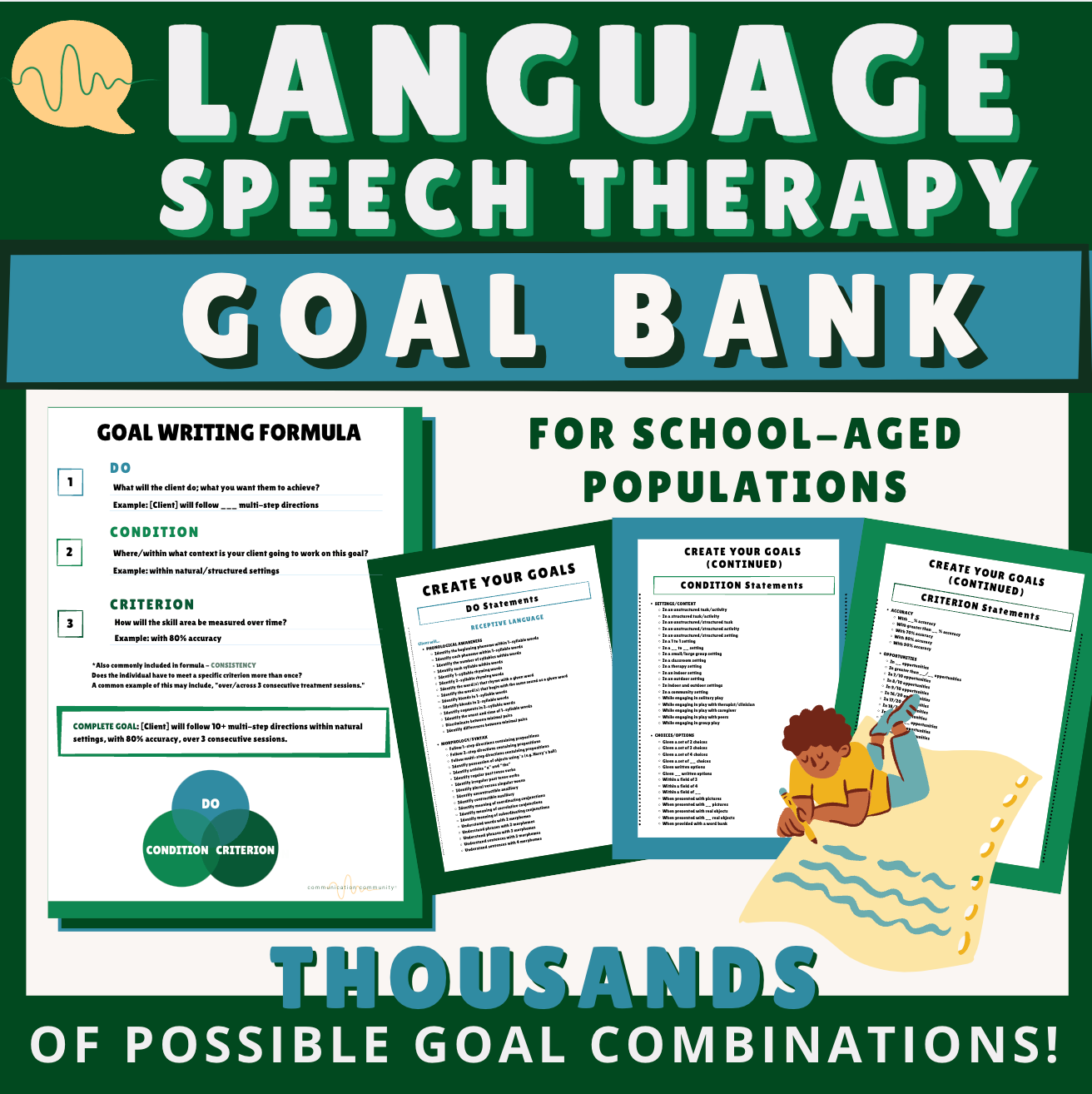
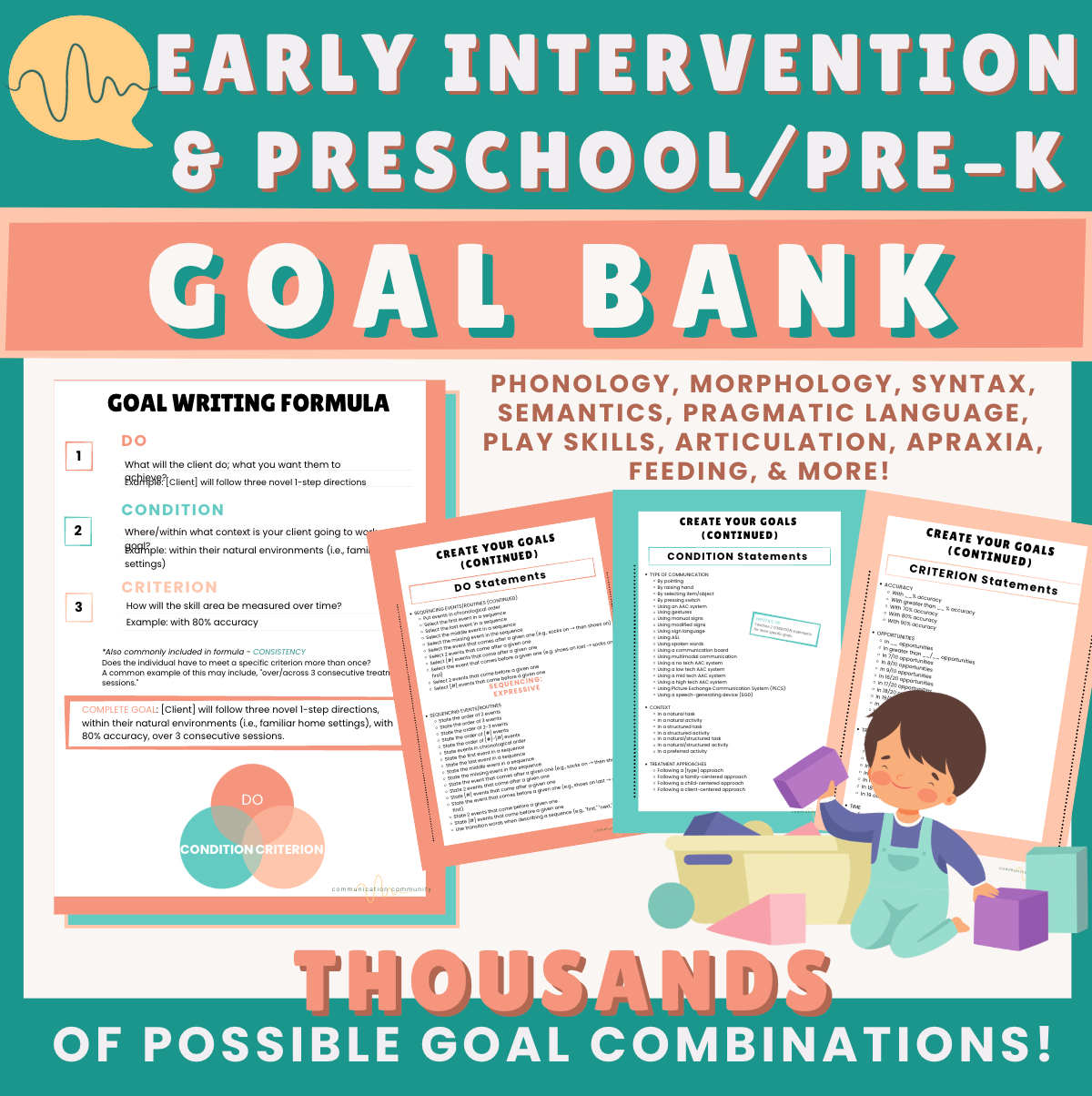
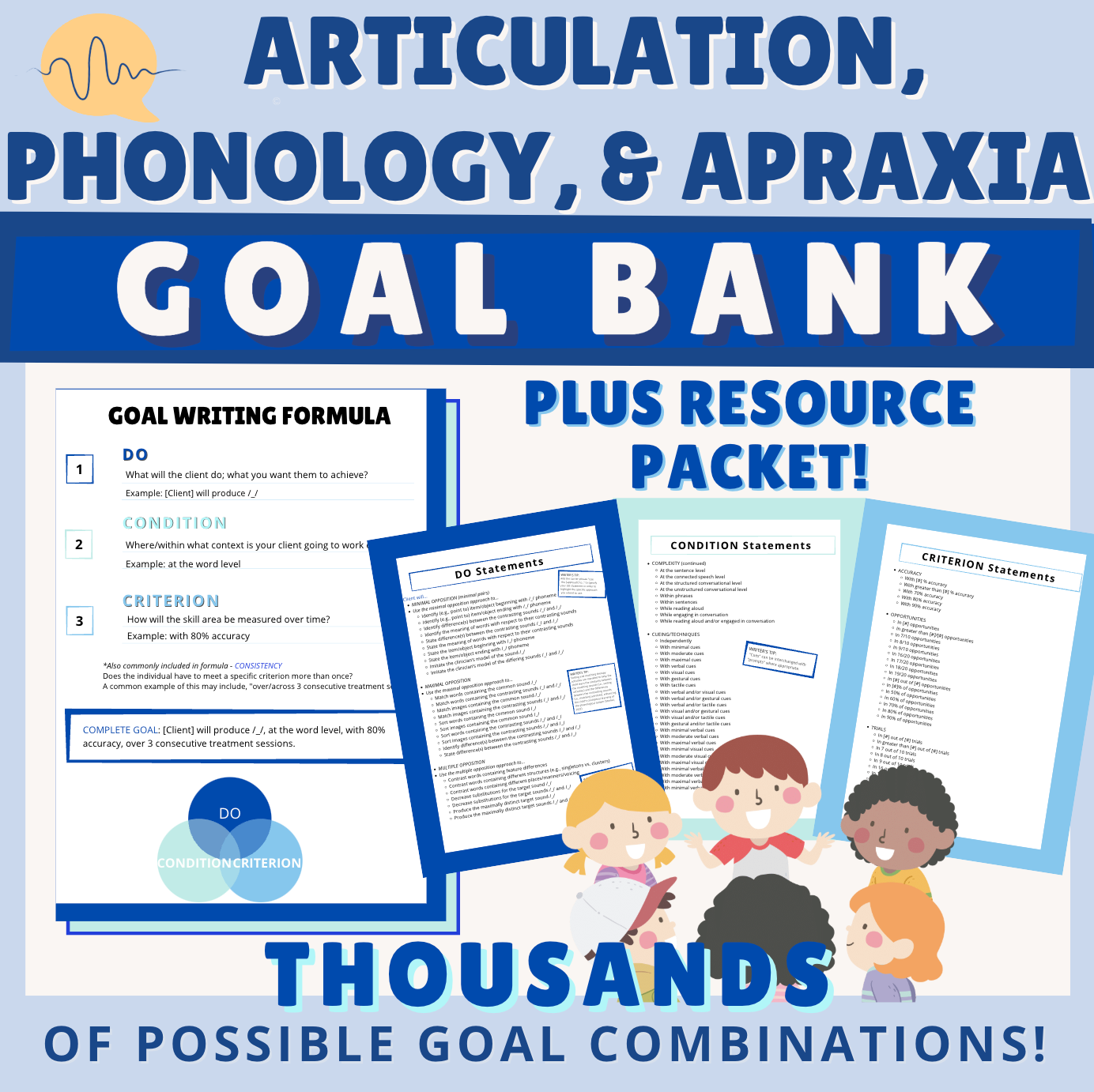
Access these and MUCH more in our Premium Community OR available a la carte in our TPT Store!
In our Premium Community, access well over $1000 worth of digital therapy resources (including designated Early Intervention and Child Language spaces), research summaries, and community forums.
Writing Phonological Awareness Goals for Speech Therapy
In this article, we focus on writing goals for increasing phonological awareness skills during therapy. First, we will dive into how these goals can be structured:
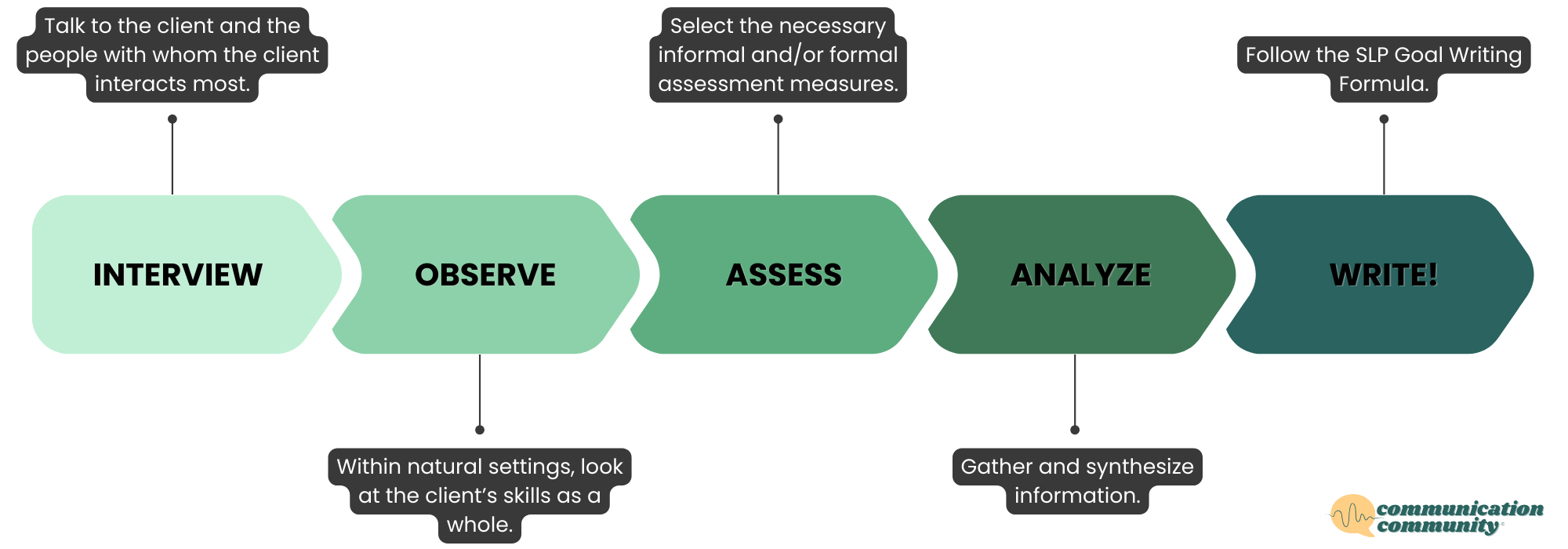
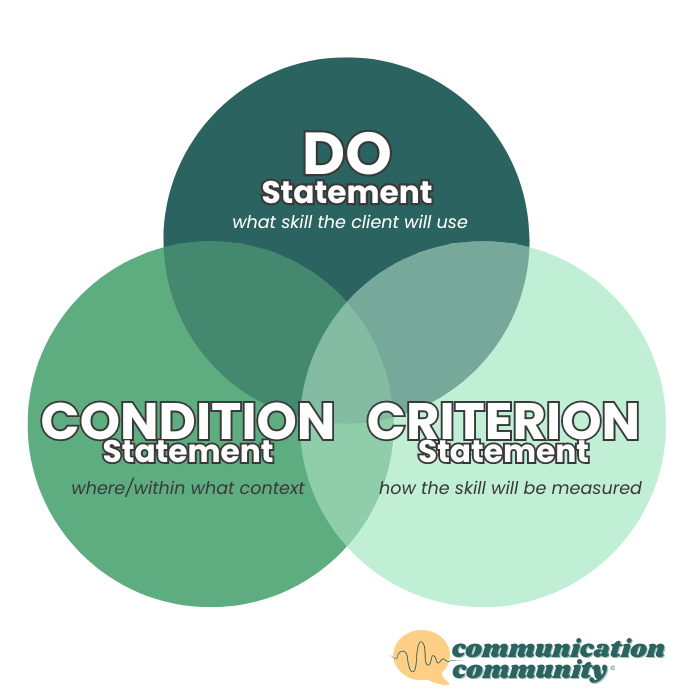
As seen above, speech goals should be written with 3* components in mind: the DO statement, the CONDITION statement, and the CRITERION statement.
*Also commonly included is consistency (we incorporate this!). Aka does the individual have to meet a specific criterion more than once? A common example of this may include across 3 consecutive sessions. This is usually something understood by the therapy organization/service provider and is sometimes/sometimes not included in the written goal itself. This is to ensure that the skill has been generalized and provides more reliable data that the skill has been properly mastered.
DO Statement
What the client is actually going to DO and the specific skill they will be working towards.
Example: will identify each syllable within a multi-syllabic word
CONDITION Statement
The specific setting and/or context your client will work on this skill.
Example: during a structured literacy task
CRITERION Statement
How the client’s performance will be measured.
Example: with 80% accuracy
DO + CONDITION + CRITERION
Example: [Client] will identify each syllable within a multi-syllabic word, during a structured literacy task, with 80% accuracy.
There you have it! An example using our Goal Writing Formula containing the DO + CONDITION + CRITERION (don’t forget to think about consistency!) for increasing phonological awareness skill areas.
Phonological Awareness Goal Bank
Rhyming
Example #1: [Client] will circle the two words that rhyme, when presented in a field of 4-5 words, with 90% accuracy.
Example #2: [Client] will state a word that rhymes with a given word, during a structured reading exercise, in 4 out of 5 opportunities.
Syllable Awareness
Example #1: [Client] will underline the first syllable within a given word, when presented in a worksheet format, with 80% accuracy.
Example #2: [Client] will tap out each syllable within words, during a structured activity, in 9 out of 10 trials.
Phoneme Isolation
Example #1: [Client] will produce each phoneme within familiar 3-letter words, when presented on flashcards, with 70% accuracy.
Example #2: [Client] will identify the words that begin with the same sound as a given word, when presented with visual stimuli (i.e., pictures/items), in 8 out of 10 trials.
Sound Blending
Example #1: [Client] will state the correct word when provided with a sound blend (e.g., “c - a - t --- what animal is that?”), during a structured activity, with 90% accuracy.
Example #2: [Client] will blend each individual phoneme to produce a complete word, during a reading task with the clinician, in 4 out of 5 opportunities.
Looking for more goal writing resources?
For more goals posts, check out our collection of other speech and language goals:
- How to Write Pragmatic Language Goals
- How to Write Receptive Language Goals
- How to Write AAC Goals
- How to Write Articulation Goals
- How to Write Expressive Language Goals
- How to Write Play Skills Goals
- How to Write Fluency Goals (Stuttering)
- How to Write Voice Goals (Pediatric)
- How to Write Cluttering Goals
References/further resources
Roseberry-McKibbin, C., & Hegde, M. N. 1. (2016). An advanced review of speech-language pathology: Preparation for PRAXIS and comprehensive examination (4th ed.). Austin, Tex.: PRO-ED
https://www.communicationcommunity.com/what-is-phonological-awareness/

![How to Write Phonological Awareness Goals [with goal bank]](https://www.communicationcommunity.com/content/images/2024/07/How-to-Write-Phonological-Awareness-Goals.png)
![How to Write Apraxia Goals [with goal bank]](https://www.communicationcommunity.com/content/images/2025/07/Apraxia-Goals--2-.png)
![How to Write Aphasia Goals [with goal bank]](https://www.communicationcommunity.com/content/images/2024/07/Aphasia-Goals--updated-.png)
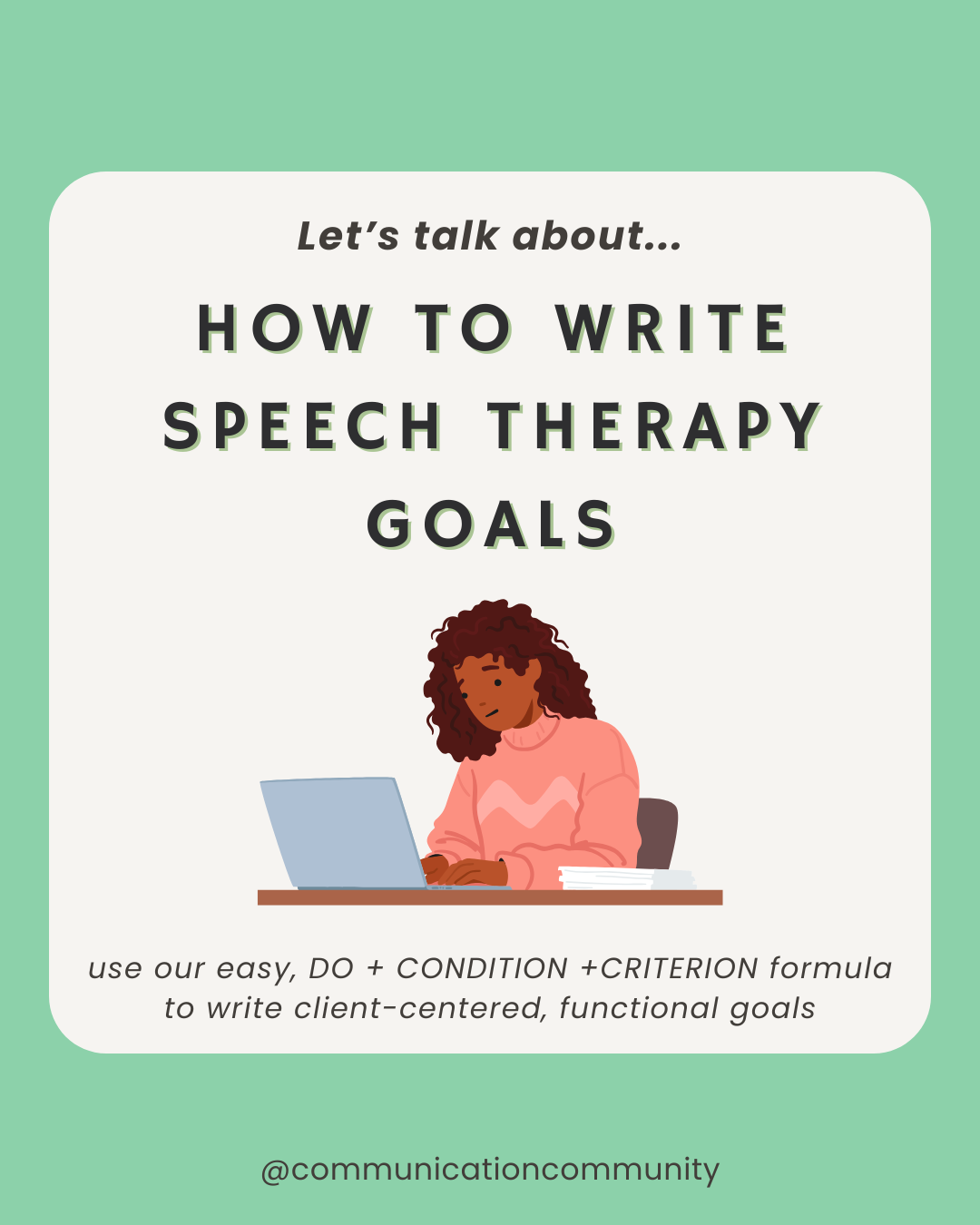
![How to Write Executive Functions Goals [with goal bank]](https://www.communicationcommunity.com/content/images/2024/10/How-to-Write-Executive-Functions-Goals.png)
![How to Write Play Skills Goals [with goal bank]](https://www.communicationcommunity.com/content/images/2024/07/Play-Skills-Goals--updated---1-.png)
